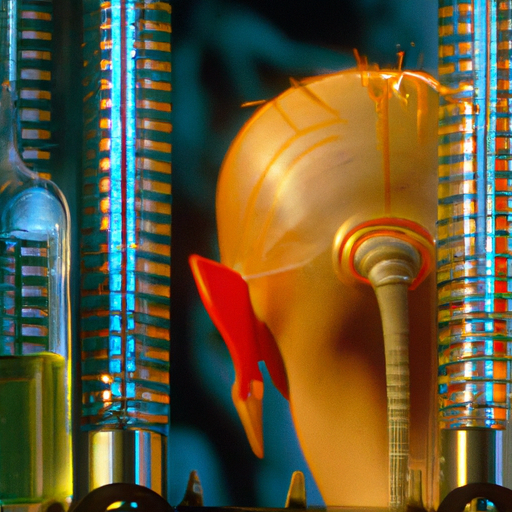Dive into the profound world of filmmaker Luc Besson. Known for his distinctive storytelling and visually stunning direction, Besson has created a unique niche in the film industry. This blog post explores the defining elements of his movies, the impact of his work, and his influence on contemporary cinema.
1. "The Fifth Element: A Pinnacle of Besson's Creativity?"
Released in 1997, "The Fifth Element" remains one of Luc Besson's most iconic films, captivating audiences with its unique blend of science fiction, action, and humor. In this futuristic masterpiece, Besson demonstrates his unparalleled creativity as a filmmaker. Set in a visually stunning world, the film takes us on a thrilling journey as we follow the unlikely hero, Korben Dallas, played impeccably by Bruce Willis. Besson's imaginative storytelling and attention to detail are evident in every frame, making "The Fifth Element" a true pinnacle of his creative genius.
One of the most remarkable aspects of "The Fifth Element" is Besson's ability to seamlessly blend various genres. The film effortlessly transitions from heart-pounding action sequences to moments of light-hearted comedy, all while maintaining a cohesive narrative. Besson's visionary approach to storytelling is further enhanced by the film's stunning visual effects and intricate production design. The futuristic world he creates is filled with vibrant colors, intricate costumes, and awe-inspiring set pieces, immersing viewers in a visually captivating experience.
Furthermore, Besson's ability to create memorable and complex characters is showcased in "The Fifth Element." From the enigmatic Leeloo, portrayed by Milla Jovovich, to the eccentric and memorable character of Ruby Rhod, played by Chris Tucker, each character adds depth and dimension to the story. Besson's skillful direction allows the actors to shine, bringing their characters to life and making them memorable long after the credits roll.

1. A vibrant still from 'The Fifth Element' showcasing Besson's unique visual style.
2. 'Luc Besson's Heroines: Redefining Female Characters in Cinema'
Throughout his filmography, Luc Besson has consistently showcased strong and empowered female characters, challenging traditional gender roles in cinema. Besson's heroines are not mere damsels in distress, but complex individuals with agency and depth. One notable example is Mathilda, portrayed by Natalie Portman in "Léon: The Professional." Despite her young age, Mathilda is portrayed as intelligent, resilient, and determined, defying societal expectations of how young girls should behave. Besson's portrayal of Mathilda broke new ground in cinema, paving the way for more nuanced and empowering female characters.
Another remarkable example of Besson's redefinition of female characters is Leeloo from "The Fifth Element." Played by Milla Jovovich, Leeloo is not just a love interest or sidekick but a crucial protagonist in the story. She is portrayed as strong, capable, and independent, showcasing a range of emotions and fighting skills. Besson's portrayal of Leeloo challenged the notion that female characters should be defined solely by their relationships to male counterparts, instead emphasizing their individual strengths and abilities.
In Besson's films, female characters are not limited to traditional gender roles. They often take on roles typically associated with male characters, such as action heroes or leaders. For instance, in "Lucy," Scarlett Johansson portrays a woman who gains extraordinary powers and becomes a force to be reckoned with. Besson's heroines defy stereotypes and demonstrate that women can be just as capable, if not more so, than their male counterparts.
3. Understanding the Aesthetic of Besson's Cinematic Universe: A Visual Feast?
Luc Besson is renowned for his visually stunning films that transport audiences to imaginative worlds. His cinematic universe is characterized by vibrant colors, intricate set designs, and visually striking compositions. Besson's meticulous attention to detail and his ability to create visually immersive environments make his films a true feast for the eyes.
One notable aspect of Besson's visual aesthetic is his use of bold and vibrant colors. Whether it's the neon-lit streets of futuristic cities or the lush landscapes of fantastical realms, Besson's films are often drenched in rich and saturated hues. This deliberate choice of color palette adds depth and intensity to the storytelling, enhancing the emotional impact of the scenes.
Furthermore, Besson's films feature meticulously designed and visually stunning sets. Each location is crafted with intricate details that contribute to the overall atmosphere of the film. Whether it's the grand opera house in "The Fifth Element" or the gritty streets of New York in "Léon: The Professional," Besson's sets are carefully constructed to create a sense of authenticity and immerse the audience in the world he has created.
Additionally, Besson's use of composition and framing adds to the visual appeal of his films. He often employs dynamic camera movements and unconventional angles to create visually striking shots. Besson's cinematography not only captures the action but also serves as a means of storytelling, conveying emotions and intensifying the narrative.

3. A sequence showing Besson's ingenious use of color and composition in his movies.
4. 'Is Luc Besson's Influence Underestimated in Contemporary Cinema?'
Luc Besson's impact on contemporary cinema cannot be underestimated. Despite his undeniable success and the cult following he has garnered, Besson's influence seems to be often overlooked or dismissed. However, a closer examination reveals the significant contributions he has made to the industry and the lasting impact of his storytelling style.
One area where Besson's influence can be seen is in the portrayal of strong and complex female characters. Throughout his filmography, Besson has consistently presented women who are not merely passive objects of desire, but rather formidable protagonists with agency and depth. His films challenge traditional gender roles and provide a refreshing and empowering representation of women in cinema.
Another aspect of Besson's influence lies in his ability to seamlessly blend different genres. He is known for his mastery of mixing elements of action, science fiction, and drama to create unique narratives that captivate audiences. This innovative approach to genre-bending has inspired many filmmakers to experiment with blending different styles and themes in their own work.
Furthermore, Besson's visual style and storytelling techniques have left an indelible mark on contemporary cinema. His use of stunning visuals, fast-paced editing, and thrilling action sequences have become hallmarks of his films. Many filmmakers today have been influenced by his dynamic and immersive storytelling approach, incorporating similar techniques to engage and captivate audiences.
Moreover, Besson's international success and his ability to create films that transcend language barriers have had a significant impact on the globalization of cinema. His films have reached audiences around the world and have inspired filmmakers from diverse cultural backgrounds to tell their own stories on a global scale.
Luc Besson's films, with their unique blend of visual spectacle, compelling narratives, and memorable characters, have carved a distinctive place in the realm of cinema. His body of work, marked by its originality and creativity, continues to inspire filmmakers and audiences alike. Amidst a world of cinematic homogeneity, Besson's films stand as a testament to the power of individual vision and storytelling.


